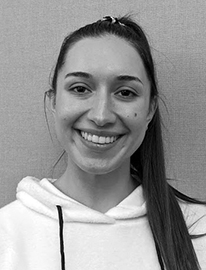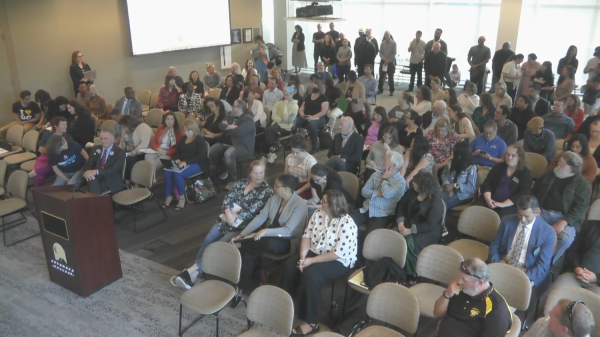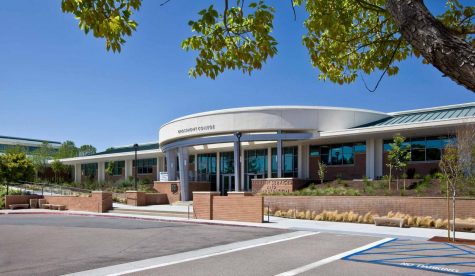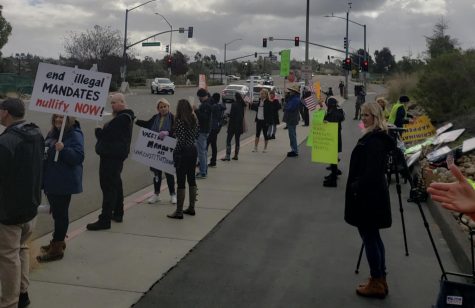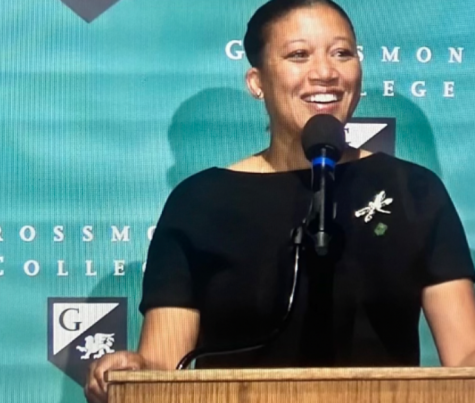The Enrollment Plunge
WHY has student enrollment at Grossmont DECLINED?
March 21, 2020
As a student, when you drive onto campus and struggle to find your parking spot, you would probably never guess student enrollment has decreased.
But student enrollment has been dropping for the last three years, and while it is starting to level off this semester, 126 more class sections were canceled this semester compared to Spring 2019.
At a March 10 forum, Mike Reese, the interim vice president of Academic Affairs, said many of these cancellations were due to over-scheduling and they did not drastically affect student enrollment. However, nationwide, enrollment has declined by 1.7%, according to The Wall Street Journal.
According to Dr. Nabil Abu-Ghazaleh, Grossmont’s president, the decline is attributed to a few reasons. One is student’s economic environment.
“Some students are not ready at this moment and we respect their decisions especially if its work, or economic opportunity—that’s a part of reality,” the president said.
When the economy is doing well and more job opportunities are being created, the demand to enroll in college is not a pressing matter for many people, specifically for students with families at home. Many students with children and families to support are putting off school to join the workforce. With a growing job market, it’s no doubt the economy would have an impact on enrollment.
While we are your friendly local community college… we are also global in reach and top-notch in actual support for our students.
— Dr. Nabil Abu-Ghazaleh
The president said another factor for low enrollment is the encouragement from faculty and staff pushing students to graduate or transfer from Grossmont.
Faculty and staff know, for many, community college is the first step of their higher education journey. With more students earning degrees and certificates, Grossmont has become the “gateway to San Diego State University,” Abu-Ghazaleh said, with transfer rates at 10%.
Although the graduation and transfer rates attribute to low enrollment, faculty and staff still want students to pursue their educational goals.
“Community college was created to be a bridge for students into careers or four-year schools. I think that should be at the forefront of how we operate,” said Terry Sivers, an adjunct counselor at Grossmont. “If we focus on the needs of the students, I think in turn our retention rates, graduation rates and possibly even enrollment will increase because of the commitment by faculty and staff to serving the students.”
When school offices are open to students and live help is available, registration rates go up. The president said this is evident through “unintended barriers” such as the challenging online registration system.
Because Grossmont understands online registration is a hurdle causing a delay for many students, they are working to make improvements on the platform to recover the enrollment drop. Bringing enrollment rates up is an important goal for Grossmont and they plan to do so by improving the registration method, but also by strongly advertising the results being produced at Grossmont.
“We have not been good about advertising our- strengths… we know the students who come here benefit from the experience, but many are perhaps distracted by the advertising of other institutions that offer promises,” Abu-Ghazaleh said.
The president acknowledged the lack of advertising at Grossmont, but plans on turning that around by reminding potential students:
“While we are your friendly local community college… we are also global in reach and top-notch in actual support for our students.”
Grossmont must adapt to enrollment drops. It has done so by balancing the budget and readjusting how money is spent. This can negatively affect the school because decisions regarding staffing and infrastructure must be made, such as where funding should and should not be held back.
“We have to balance the budget; we have to put our resources in the places where they make the best sense for the students we have,” Abu-Ghazaleh said. “It’s balancing your expenditures and your revenues really. It’s a simple concept, but it’s hard work because we’re making difficult decisions.”
Most recently, the number of full-time faculty positions has decreased for the year. By email, the president said, “While I know committees have been eager to proceed, our enrollment and budget information have dictated a review of the long-term commitments that we make.”
These staffing decisions come as a result of low enrollment and budgeting but will be revisited as enrollment adjusts.



